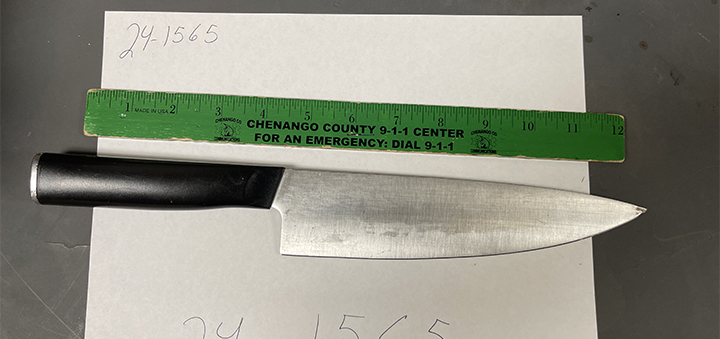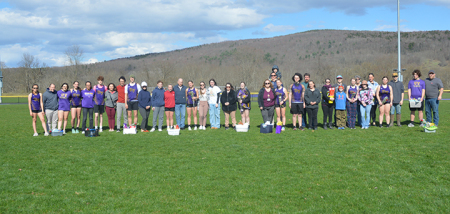Labor Day: A Call To Action
Published:
September 4th, 2015
By Donna Brazile
NEA Columnist
When I was a girl, Labor Day marked the end of summer. It was a day of rest and recreation, family and picnics. And, like all kids, I was ready to go back to school.
Labor Day was also honored in our home for what it is: a day set aside to recognize the contributions of working men and working women to America.
Like so many in my family, I'm a proud card-carrying member of a union. For decades, our family worked as teachers, truckers, laborers and firefighters. The improvements we experienced in our lives truthfully came more from the unceasing struggle of our labor unions working together than from the accomplishments of our long working days as individuals.
In 2015, America remains a working nation; we are steeped in the work ethic.
And thanks to the efforts and sacrifices of thousands, including unknown martyrs who died struggling for better working conditions, we eat better and live better and rest better than our often exploited ancestors.
Did you know our Labor Day was inspired by Canada? The first Labor Day in the Americas was a spontaneous event. The Toronto Printers' Union had repeatedly demanded a nine-hour work day, and repeatedly the newspapers ignored them.
After three years of petitions, in 1872, the printers went on strike. Two thousand printers marched down Toronto's streets, gathering bystanders and workers until they entered Queen's Park 10,000 strong. The editor of the Toronto Globe had their leaders arrested for criminal conspiracy. Most lost their jobs -- in Canada, it was a criminal act to form a labor union or to strike.
In the United States, that first-ever Labor Day parade caught the attention of Oregon citizens. In 1887, Oregon became the first state to honor labor. Twenty-nine states followed.
Labor Day finally became a national observance in 1894 because President Grover Cleveland attempted to break a Pullman's wildcat strike in early May in Chicago by sending in U.S. marshals and the army. After the carnage that followed, President Cleveland was fearful that the May date would become immortalized by working men and women. International workers organizations already celebrated labor on May Day in commemoration of the Haymarket Affair in May 1886, also in Chicago.
Cleveland asked Congress to rush through a labor holiday for any day but that one. A mere six days after the bloodbath, Cleveland declared the first day of September as our Labor Day.
Today our workforce is changing. Blue-collar jobs are morphing into cyber work. Humans are being replaced by robots. By last December, Amazon had 10,000 robots ready to fill Christmas orders. It makes me wonder who will have the money to buy Apple watches, unless robots wear them!
The problems of working men and women -- those people who remain the backbone of this nation -- have changed, too. Their needs, in many cases, are as dire (in some cases more so) than the needs of the workers in the last century.
The achievements of 19th- and 20th-century men and women to obtain fair working conditions and pay have, in the 21st century, evaporated into part-time jobs and pay so low that a significant portion of our workforce are called "the working poor."
Income inequality is growing. The difference in income between the top 1 percent of our population and, well, everybody else, is widening to a gaping gulf. Regardless of what impression you may have of how harsh income inequality is, let me assure you, it's far worse.
Sarah Anderson of the Institute for Policy Studies, authored a report this March in which she detailed that the bonuses paid to Wall Street CEOs last year was double the total earnings of all of America's full-time minimum wage earners. Forbes called it "a fun number" that was "true," and added that we really needn't be all that concerned about it.
The owners of Wal-Mart, the Walton Family, have more wealth than the combined wealth of 42 percent of America. The Waltons don't like labor unions. When those pesky, progressive Canadians organized Wal-Mart's first ever union in 2005, the Waltons shut down the store. ("Goodnight, John Boy!")
In 2015, Wal-Mart is giving some of its workers raises. That's encouraging, because in many states their workers are paid so poorly and are given such short work weeks that they must turn to food stamps and welfare to survive. Forbes reported that Wal-Mart's low-wage, low-hour workers were costing taxpayers $6.2 billion annually.
The growing income gap is real and it isn't just the poor who are included in the bottom -- it's the majority of all Americans. The government's policies lean towards those with money or access to the corridors of power. Last month, the satirical publication The Onion ran an all-too-true fake article: "Encouraging Study Finds It's Now Easier Than Ever for American Dollars to Rise Into Upper Class."
Many fast food workers and others in chronically low-paying jobs are beginning to organize to demand decent wages and working conditions. Theirs is the same struggle that was waged by the industrial workers of the past centuries whom we celebrate on Labor Day. Today's workers deserve our support this weekend and throughout the year.
It's long past time that the country starts to focus on helping average workers get ahead and not fall further behind. That's the real meaning of Labor Day.
Comments







